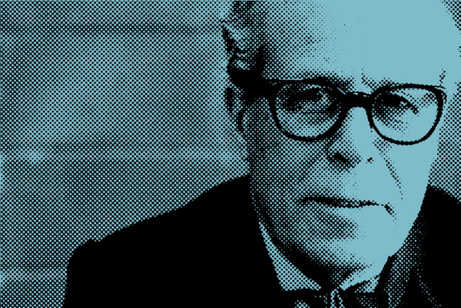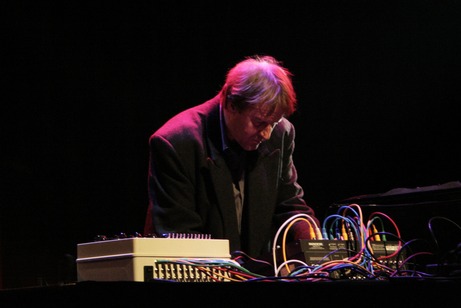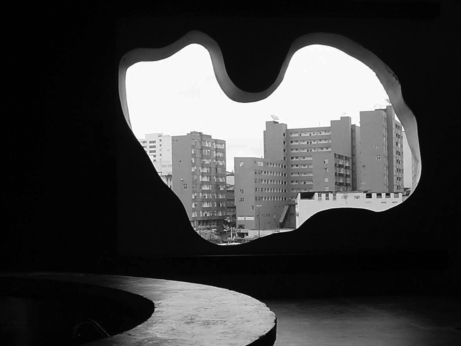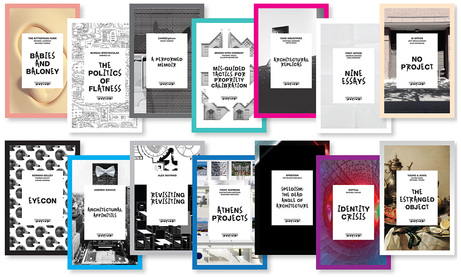2015 Grants to Individuals Announcement
May 27, 2015
(6pm)
Please RSVP
On May 27, the Graham Foundation will announce its 2015 Grants to Individuals with a public presentation and reception at 6pm CDT at the historic Madlener House in Chicago. During this special program, which will be broadcast online via live streaming, we will announce over $490,000 in grants to individuals around the world to support new and challenging ideas in architecture. The event will also include presentations by a selection of our new grantees about their Graham-supported work in progress.
Join us in Chicago or via Live Streaming!
6pm CDT Awards Announcement
7-8pm CDT Reception
Watch the program on YouTube Live by clicking here.

Josep Lluís Sert: A Nomadic Dream
May 20, 2015
(6pm)
Screening
Please RSVP
MAS Context, in collaboration with the Graham Foundation, is pleased to present a screening of the film Josep Lluís Sert: A Nomadic Dream.
The documentary, written and directed by Pablo Bujosa Rodríguez, tells the story of Josep Lluís Sert, a talented architect, city planner, and contemporary of Miró, Calder, and Picasso, and his indelible impact on the course of American architecture. Dean of the Harvard Graduate School of Design from 1953 to 1969, Sert fled Spain during the Civil War and immigrated to the United States where he lived for almost forty years. Sert had a connection to Chicago as he was part of the Graham Foundation Advisory Board when the institution was founded in 1956.
The film features never before seen archival footage as well as interviews with contemporaries of Sert including Rafael Moneo (architect), Robert Campbell (architect, journalist, 1996 Pulitzer Prize winner, and former colleague of Sert), Robert Gardner (filmmaker, former Director of the Carpenter Center for Visual Arts at Harvard University, and personal friend of Sert), and Gerald & Nina Holton (personal friends of Sert and current owners of the Sert home in Cambridge).
Related Links
Josep Lluis Sert / A Nomadic Dream
www.jlsertfilm.com

CM von Hausswolff
Lampo Performance Series
May 16, 2015
(8pm)
Performance
RSVP Required
On May 16, Swedish composer and artist CM von Hausswolff will perform a 4-channel solo electronics work using a multi-wave oscillator, microphone for voice, and computer. Recognized for his complex electornic drone compositions, von Hausswolff draws on wide-ranging recording devices, including camera, tape recorder, radar, and sonar, to produce intuitive studies of frequency, distorted electricity, and churning feedback.
Carl Michael von Hausswolff is a Swedish composer and visual artist. Since the late 1970s, his audio work has explored digital and analog recording devices, and his conceptual art practice has combined performance art, light- and sound installations, and photography. von Hausswolff has performed throughout the world, solo and with collaborators, including Russell Haswell, Pan Sonic, the Hafler Trio, Erik Pauser, and John Duncan. In 2012, he received a Prix Ars Electronica award for Digital Musics. His major exhibitions and performances include Documenta (1997, 2012); Johannesburg Biennial (1997); Hayward Gallery (2000); Biennale di Venezia (2001, 2003, 2005, 2007, 2011, and 2015); Portikus (2004); The Land Foundation (2005); The Morning Line, Thyssen-Bornemisza (2010); Stedelijk Museum (2013); and the Institute of Contemporary Art, Philadelphia (2014), among others. von Hausswolff’s first Lampo appearance dates back to February 2001, when he performed Circulating Over Square Oceans. In August 2003 he screened two films for Lampo—Hashima, Japan (2002) and Pan Sonic Plays Kurenniemi (2002). During that 2003 visit, he also began work on a special project for Lampo and WhiteWalls, published as Red Empty (Chicago, 2003) and the audio work There Are No Crows Flying around the Hancock, which he premiered in March 2005.
This performance is presented in partnership with Lampo. Founded in 1997, Lampo is a non-profit organization for experimental music and intermedia projects. Visit www.lampo.org.
PLEASE NOTE: RSVP is required, and event entry is on a first-come, first-serve basis, so please plan to arrive early. Doors will open at 7:30PM.

Lina Bo Bardi: Architect etc.
Zeuler Lima
May 14, 2015
(6pm)
Talk
Please RSVP
In conjunction with the Graham Foundation's new exhibition, Lina Bo Bardi: Together, Zeuler Lima will present his recent Graham-funded book Lina Bo Bardi about the work and life of the Italian-born Brazilian architect, and will discuss Bo Bardi's prolific career as an architect, editor, theorist, and exhibition designer.
Copies of Lima's Lina Bo Bardi (Yale University Press, 2013) will be available for purchase in the Graham Foundation Bookshop.
Zeuler R. Lima is an architect, author, and associate professor at Washington University in Saint Louis. He received his Ph.D. from the Universidade de São Paulo and completed a post-doctorate fellowship in comparative literature at Columbia University. He unanimously received the International Bruno Zevi Prize for architectural history and criticism in 2007. Lima has published extensively on twentieth-century architecture, urbanism, art, and landscape architecture. He has won several Brazilian design competitions and awards, including the Federal District Legislative Chamber (2010) on the Monumental Axis in Brasília, DF. He also practices drawing, painting, and printmaking and has participated in several exhibitions.
Image: Gregório de Mattos Theater, Salvador, Lina Bo Bardi, 1987. Photo credit: Zeuler R. Lima
Related Links
Places Journal: "Lina Bo Bardi and the Architecture of Everyday Culture"
https://placesjournal.org/article/lina-bo-bardi-and-the-architecture-of-everyday-culture/
For more information on the exhibition, Lina Bo Bardi: Together, click here.

Treatise L.A. Book Launch & Party
May 02, 2015
(5pm)
Book Signing
Neutra VDL House
2300 Silver Lake Boulevard
Los Angeles, CA 90039
Please RSVP
In collaboration with Archinect and the Neutra VDL House, the Graham Foundation is pleased to present the Los Angeles book launch and party for the Treatise: Why Write Alone? publication series at the Neutra VDL House. Organized by Los Angeles-based designer Jimenez Lai of Bureau Spectacular and the Graham Foundation, Treatise brings together fourteen young design offices working at the forefront of conceptual architecture. This collection of individually-authored treatises follows our recent exhibition at the Graham Foundation in Chicago.
PUBLICATION
Both the complete set and individual volumes (116-pages each; $20) will be available for purchase at the event. Please contact bookshop@grahamfoundation.org for more information about purchasing.
Bittertang, Babies and Baloney
Bureau Spectacular, The Politics of Flatness
CAMESgibson, A Performed Memoir
Design With Company, Mis-guided Tactics for Propriety Calibration
Fake Industries Architectural Agonism, Four Hypotheses on the Use of Agonistic Copies in the Architectural Field
First Office, Nine Essays
Pieterjan Ginckels, SPEEDISM: The Dead Angle of Architecture
is-office, No Project
Andrew Kovacs, Architectural Affinities
Alex Maymind, Revisiting Revisiting
Norman Kelley, Eyecon
Point Supreme, Athens Projects
SOFTlab, Identity Crisis
Michael Young, The Estranged Object
For more information on the exhibition, Treatise: Why Write Alone?, click here.






 PREVIOUS POSTS
PREVIOUS POSTS